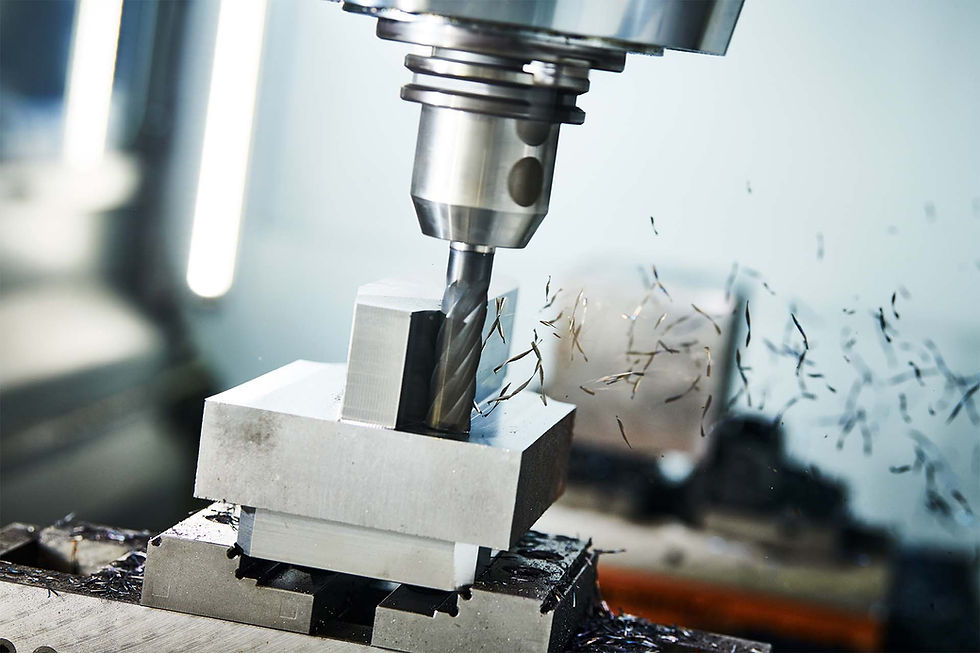A Guide to CNC Machining Aluminum: Techniques and Best Practices
- Calvin Wu
- May 2, 2023
- 2 min read
Outline:
Introduction
Importance of CNC machining aluminum
Challenges in machining aluminum
Choosing the Right Aluminum Alloy
Common aluminum alloys for CNC machining
Factors to consider when selecting an alloy
Tooling Selection and Considerations
Carbide cutting tools for aluminum
Tool coatings and geometries optimized for aluminum machining
CNC Machining Techniques for Aluminum
Cutting speeds and feeds
Coolant and lubrication
Chip evacuation and management
Best Practices for CNC Machining Aluminum
Optimizing surface finish
Maximizing tool life
Reducing cycle times and improving efficiency
Conclusion
The importance of proper techniques and best practices in CNC machining aluminum
The impact of these practices on the quality, efficiency, and success of your CNC machining operations
Introduction

Aluminum is a popular material in CNC machining due to its lightweight, strength, and versatility. However, it presents unique challenges, such as high thermal conductivity and tendency to create long, stringy chips. This guide will discuss the techniques and best practices for successful and efficient CNC machining of aluminum.
Choosing the Right Aluminum Alloy

There are several aluminum alloys available, each with unique properties and applications. Some common alloys for CNC machining include:
6061: This alloy is known for its excellent machinability, weldability, and corrosion resistance, making it suitable for a wide range of applications.
7075: With high strength and good fatigue resistance, this alloy is ideal for aerospace and automotive applications.
When selecting an aluminum alloy, consider factors such as strength, corrosion resistance, weldability, and machinability.
Tooling Selection and Considerations

For aluminum machining, solid carbide cutting tools are recommended due to their hardness and wear resistance. Additionally, choose tools with coatings and geometries optimized for aluminum machining, such as:
Polished or bright finishes: These coatings reduce friction and prevent the aluminum from sticking to the tool.
Large flute angles and high helix angles: These geometries facilitate efficient chip evacuation and reduce heat generation.
CNC Machining Techniques for Aluminum

When machining aluminum, consider the following techniques:
Cutting speeds and feeds: Use higher cutting speeds and moderate feed rates to reduce heat generation and improve surface finish.
Coolant and lubrication: Utilize appropriate coolant and lubrication to minimize heat build-up and improve tool life.
Chip evacuation and management: Employ proper chip evacuation techniques, such as compressed air or coolant, to prevent chip buildup and tool breakage.
Best Practices for CNC Machining Aluminum

Adopt these best practices to optimize your aluminum machining process:
Optimizing surface finish: Use sharp cutting tools and appropriate cutting parameters to minimize burrs and improve surface finish.
Maximizing tool life: Proper coolant and lubrication, along with optimized cutting parameters, will help extend tool life and reduce tool wear.
Reducing cycle times and improving efficiency: Implement high-speed machining techniques, such as adaptive clearing and trochoidal milling, to minimize cycle times and increase productivity.
Conclusion
Understanding the unique challenges of CNC machining aluminum and implementing the proper techniques and best practices are essential for producing high-quality parts. By choosing the right aluminum alloy, selecting the appropriate tooling, and employing the recommended machining techniques, you can optimize your CNC machining processes for aluminum and enhance the quality, efficiency, and success of your operations.



Comments